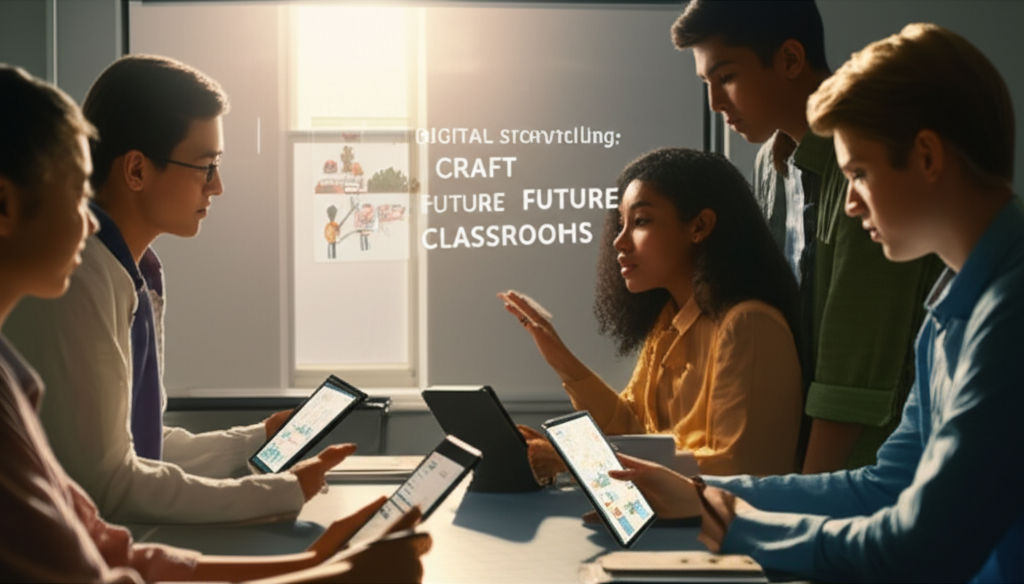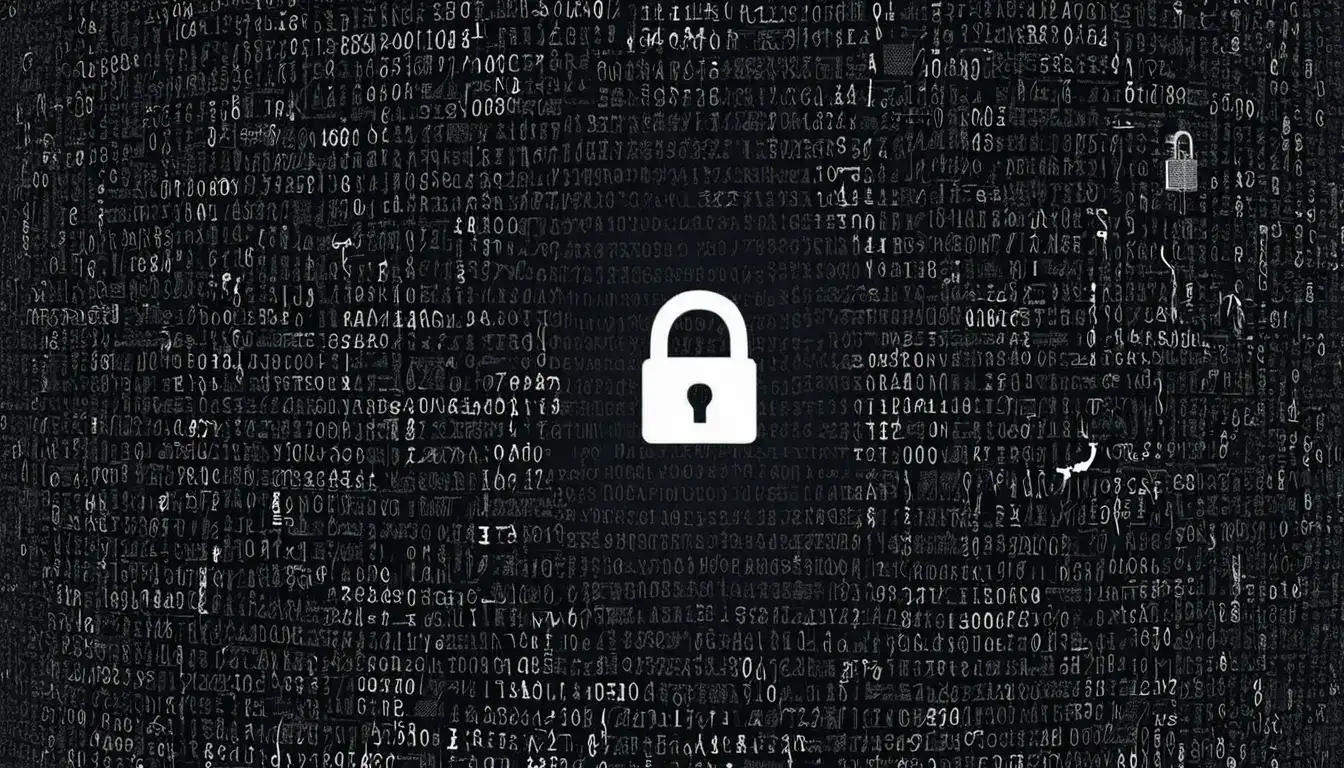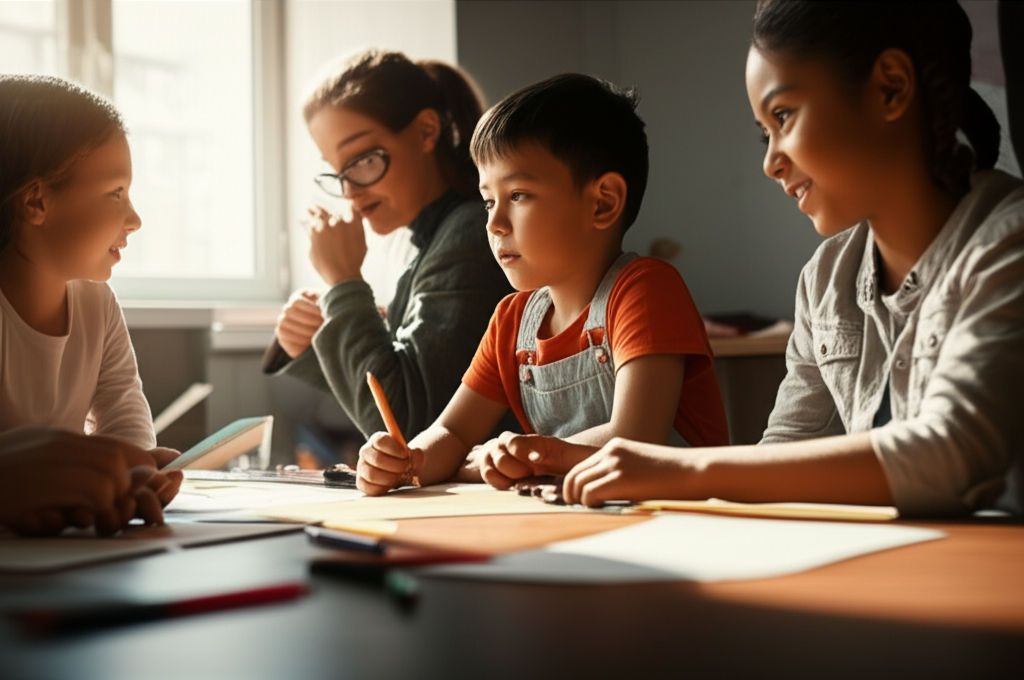Digital Storytelling: Craft Future Classrooms
Emily Willis

Photo: Digital Storytelling: Craft Future Classrooms
Digital Storytelling: Crafting Future Classrooms with Engaging Narratives
Remember those captivating tales your favorite teacher used to tell? The ones that brought history to life, made science fascinating, or transformed a complex math problem into an adventure? Storytelling has always been at the heart of effective teaching. But what happens when we combine this ancient art with the incredible power of modern technology? We get digital storytelling, a revolutionary approach that is actively crafting the future classrooms of tomorrow.
In a world brimming with screens and information, simply presenting facts often isn't enough to capture and hold attention. Modern learning demands more; it calls for experiences that are interactive, personalized, and deeply engaging. This is where digital storytelling steps in, transforming passive learning into an exciting journey of discovery and creation.
What is Digital Storytelling, Really?
At its core, digital storytelling is about using digital tools to tell a narrative. Think of it as traditional storytelling amplified by technology. Instead of just spoken words or written text, digital stories weave together a tapestry of multimedia elements: images, videos, audio clips, music, narration, and even interactive components. It’s a dynamic blend that captures attention and conveys messages in powerful, emotionally engaging ways.
This isn't just about making a fancy presentation. It's about crafting a compelling narrative that allows individuals to express themselves, explore ideas, and share their unique perspectives. From a short animated video explaining a scientific concept to a narrated photo essay about a historical event, digital storytelling offers endless possibilities for creative learning.
Why Digital Storytelling is a Game-Changer for Learning
The impact of digital storytelling on education is profound, transforming both how students learn and how teachers teach. It’s more than just a trend; it's a pedagogical approach backed by research that significantly enhances student engagement and learning outcomes.
Boosting Student Engagement and Motivation
One of the most significant benefits of digital storytelling is its ability to supercharge student engagement. In a traditional classroom, students might passively receive information. With digital storytelling, they become active creators. This active involvement keeps them on task and deeply invested in their learning. When students are given control over reflecting, visualizing, and creating their own meaningful digital stories, their motivation soars. Studies have shown that students find using digital storytelling enjoyable and motivating, leading to increased participation in class.
Fostering Critical Thinking and Creativity
Creating a digital story isn't just about pretty pictures; it demands rigorous thought. Students must research, analyze, synthesize information, and evaluate their own ideas to build a coherent narrative. This process hones critical thinking skills and encourages innovative approaches to presenting information. It moves beyond rote memorization, pushing students to truly understand and interpret content.
Developing 21st-Century Skills
In today's rapidly evolving world, students need more than just academic knowledge; they need 21st-century skills. Digital storytelling is a fantastic vehicle for developing these essential competencies:
- Digital Literacy: Students learn to navigate and utilize various digital tools and platforms, becoming proficient in multimedia creation and understanding digital content.
- Communication Skills: They practice articulating their ideas clearly and concisely, both through written scripts and spoken narration.
- Collaboration and Teamwork: Many digital storytelling projects involve group work, teaching students how to share ideas, give and receive feedback, and work together effectively.
- Problem-Solving: From technical glitches to narrative challenges, students constantly encounter and overcome problems during the creation process.
Catering to Diverse Learning Styles
Every student learns differently. Digital storytelling appeals to a wide range of learning styles by incorporating visual, auditory, and kinesthetic elements. Instructors can present abstract concepts in more understandable ways, and students can choose how they best express their understanding, whether through images, audio, or text. This inclusivity ensures that more students can connect with the material and showcase their knowledge effectively.
Enhancing Literacy Skills Across the Board
Beyond traditional reading and writing, digital storytelling promotes multimodal literacy. Students engage with diverse communication modes, improving their ability to understand and create meaning across various platforms. For instance, it can significantly improve writing proficiency by providing opportunities to brainstorm, organize, and refine ideas using software and web resources. It also helps students develop fluency and confidence in speaking, particularly for those who might struggle with traditional presentations.
Bringing Digital Stories to Life: Tools and Techniques
The beauty of digital storytelling is its accessibility. You don't need a Hollywood budget or advanced technical skills to get started. Many intuitive tools are available, often for free, that empower both educators and students to create compelling narratives.
Popular Digital Storytelling Tools:
- Video Creation Tools: WeVideo, Adobe Creative Cloud Express (formerly Adobe Spark), Powtoon. These allow for combining video clips, images, text, and audio.
- Presentation Software: While not exclusively for storytelling, tools like Microsoft PowerPoint or Google Slides can be used to create simple narrated slideshows with images and text.
- Book Creation Apps: Storybird and Book Creator are excellent for creating illustrated digital books and comics, often with curated art or predictive drawing features.
- Interactive Story Platforms: Tools like ThingLink or Twine allow for creating interactive experiences where viewers can make choices, leading to different narrative paths.
- Audio Recording Tools: Audacity (free audio editor) can be used for recording and editing narration and sound effects.
Practical Tips for Crafting Engaging Digital Stories:
- Start with a Clear Purpose: What message do you want to convey? What do you want your audience to learn or feel? A strong narrative begins with a clear objective.
- Develop a Compelling Narrative Arc: Even short digital stories need a beginning, middle, and end. Introduce a topic, explore it, and conclude with a summary or call to action.
- Keep it Concise: Digital stories are often most effective when they are short and to the point. Aim for clarity and impact over lengthy detail.
- Embrace Multimedia: Don't just use images. Incorporate sound effects, background music, narration, and even short video clips to enhance the emotional and informational impact.
- Focus on "Show, Don't Tell": Use visuals and audio to illustrate points rather than relying solely on text. This is especially powerful for visual learners.
- Consider Your Audience: Tailor your tone, language, and content to resonate with who will be watching or interacting with your story.
- Iterate and Refine: The process of creating a digital story often involves multiple drafts and revisions. Encourage students to seek feedback and refine their work, just like a traditional writer would.
Crafting Future Classrooms: Real-World Impact
The shift towards digital storytelling isn't just theoretical; it's happening in classrooms worldwide, transforming education technology and creating dynamic modern learning environments.
- History Comes Alive: Instead of memorizing dates, students can create digital documentaries about historical figures, narrating their lives with archival photos and period music. Imagine a student creating a short film from the perspective of a historical figure, explaining their motivations and challenges.
- Science Explored: Complex scientific processes can be illustrated through animated digital stories, making abstract concepts tangible and understandable. For example, a group of students could create a narrated animation explaining the water cycle or the process of photosynthesis.
- Literacy Beyond the Page: English classes can use digital storytelling to explore interpretations of literary works, with students creating visual and auditory responses to poems or novels. This allows for deeper engagement with the text and fosters empathy by encouraging students to consider different perspectives.
- Personal Narratives: Students can share personal experiences, cultural backgrounds, or reflections on their learning journeys, building a sense of community and understanding within the classroom. This reflective nature helps learners connect personal experiences with academic goals, boosting emotional engagement.
- Interdisciplinary Projects: Digital storytelling naturally lends itself to interdisciplinary learning, combining research skills (history, science), writing (English), visual arts (design), and technology (digital tools) into a single, cohesive project.
One compelling example comes from a university project where students used analogy-based cartoons to explain complex economic concepts. This digital storytelling approach significantly enhanced student learning and boosted their attention and participation, with one analogy receiving a high appreciation rating from students. This demonstrates how relatable narratives can make even "hard topics" accessible and memorable.
Overcoming Challenges: Making it Work for Everyone
While the benefits are clear, implementing digital storytelling in the classroom isn't without its challenges. However, these are often manageable with thoughtful planning and support.
- Technological Access and Skills: Not all students or teachers may have equal access to devices or feel comfortable with new software. Providing clear tutorials, offering various tool options, and starting with simpler projects can help bridge this gap.
- Time Commitment: Creating quality digital stories takes time. Teachers need to factor this into their curriculum planning and consider breaking down projects into manageable steps.
- Assessment: How do you grade a digital story? Focus on both the content (accuracy, understanding of concepts) and the process (research, collaboration, creativity, technical execution) rather than just the final product. Rubrics can be incredibly helpful here.
- Copyright and Fair Use: Teaching students about responsible digital citizenship, including copyright and fair use of media, is crucial.
Educators can address these challenges by providing adequate opportunities to practice, fostering collaborative environments, and selecting approaches and technologies that are suitable for their students' needs and available resources.
Beyond the Classroom: Skills for Life
Latest ✨
View Allfine motor skills and provides five creative ways to nurture these skills at home. It suggests activities such as playdough exploration, building and stacking with blocks, incorporating fine motor skills into mealtime, weaving fine motor skills into reading, and exploring nature for fine motor development.
Emily Willis
In today's fast-paced world, stress, anxiety, and depression are common mental health challenges that can affect our overall well-being. Understanding these issues and taking steps to manage them is important. Strategies for managing mental health include prioritizing self-care, practicing mindfulness and relaxation techniques, challenging negative thoughts, connecting with others, developing healthy coping mechanisms, managing time effectively, and seeking professional help when needed.
Emily Willis
metaverse is a rapidly evolving concept that offers a network of interconnected 3D virtual spaces accessed through technologies like VR and AR.
Emily Willis
This article provides practical tips for setting up a comfortable and productive home office. It emphasizes the importance of choosing the right location, decluttering the workspace, optimizing desk arrangements, creating an organizational system, and creating a comfortable atmosphere with the right lighting, temperature, and air quality. It also encourages taking regular breaks, moving and stretching, and staying hydrated to maintain focus and energy levels.
Emily Willis
Business
View All
August 5, 2024
Inspiring Leaders Who Can Be Your Role Modelseffective leadership in a constantly changing world and explores the traits and habits of inspiring leaders, both historical and contemporary. It highlights the key lessons from leaders such as Nelson Mandela, Martin Luther King Jr., Jacinda Ardern, Elon Musk, and Malala Yousafzai.
Emily Willis

July 4, 2025
Find Georgia Businesses FastUnlock Georgia's vibrant business landscape! This ultimate guide helps you efficiently find GA businesses for networking, jobs, market research & more.
Emily Willis

June 9, 2025
Build a Sustainable BusinessUnlock enduring success by building a sustainable business. Discover how balancing People, Planet, & Profit drives long-term viability & positive impact.
Emily Willis
Economy
View AllDiscover the innovation economy: how new ideas, tech, and business models drive global growth and define future success.
Read MoreUnlock public policy economics! Discover why governments intervene to fix market failures, shaping everything from your coffee to your job.
Read MoreUnlock business success! Learn producer behavior: optimize costs, boost revenue, and master strategies for profit maximization and market dominance.
Read MoreEntertainment
View All
August 5, 2024
VR and AR Transform EntertainmentVirtual reality (VR) and augmented reality (AR) are transforming the entertainment industry by offering immersive experiences that blur the lines between the real and virtual worlds. VR completely transports users into computer-generated environments, while AR overlays digital elements onto the real world.
Emily Willis

August 4, 2024
Profiles of Famous Artists Who Inspire the Younger Generationthe inspirational aspects of famous artists such as Vincent van Gogh, Frida Kahlo, Pablo Picasso, Banksy, Yayoi Kusama, Jean-Michel Basquiat, Georgia O'Keeffe, Andy Warhol, Kehinde Wiley, and Ai Weiwei. It highlights their perseverance, innovation, authenticity, social commentary, mental health advocacy, and representation, among other qualities, and how these aspects continue to inspire young artists to pursue their creative dreams.
Emily Willis

July 5, 2025
Corner Entertainment GemUnlock your home's potential! Discover how a corner entertainment gem maximizes space, boosts aesthetics, and transforms overlooked nooks into dynamic hubs.
Emily Willis
Health
View AllThe focus of nutrition advice is shifting towards personalized nutrition, taking into account individual genetic makeup, lifestyle, and health goals to create a customized eating plan. This approach can lead to improved health outcomes, enhanced nutrient absorption, increased motivation, and targeted support for specific health concerns.
Emily Willis
Deep dive into Armor Correctional's lawsuits. Discover the pattern of alleged medical neglect and its profound impact on inmate healthcare challenges.
Emily Willis
ArchWell Health offers personalized, value-based primary care for seniors 60+ on Medicare Advantage. Holistic health, community focus, and better outcomes.
Emily Willis
Trending 🔥
View All
1
2
3
4
5
6
7
8
9
10
Lifestyle



Sports
View AllAugust 4, 2024
Benefits of Cross Training for Athletes: Improves Performance and Prevents Injuries
Read MoreTechnology
View All
August 5, 2024
The Future of Cybersecurity and Upcoming Challenges
cybersecurity in the digital age, highlighting key trends and challenges that will shape the future of cybersecurity. It addresses issues such as the increased use of AI and ML, the growth of IoT devices, ransomware attacks, cloud security, and supply chain attacks. It also outlines upcoming challenges in cybersecurity, including talent shortage, regulatory compliance, cybersecurity for remote work, quantum computing, and social engineering attacks.

August 4, 2024
AI-Powered Robots Take Over Manufacturing Jobs: Is Our Workforce Prepared?
AI-powered robots are transforming the manufacturing industry, leading to increased efficiency and improved product quality. While concerns about job displacement exist, AI is more likely to transform jobs rather than eliminate them.

August 4, 2024
Amidst Economic Uncertainty, Businesses Adapt and Innovate for Survival
The business world can be unpredictable, but companies can thrive by embracing adaptation and innovation. Understanding market trends, economic indicators, and global factors is crucial for charting a successful course.

August 4, 2024
Data Security in the Digital Era: Challenges and Solutions
importance of data security in the digital age, highlighting challenges such as cyberattacks, human error, weak passwords, and outdated systems. It also provides solutions to enhance data security, including encryption, strong password policies, multi-factor authentication, regular software updates, employee training, access controls, data backup, incident response plans, security audits, and advanced security technologies. These measures are essential for protecting sensitive information and preventing unauthorized access and breaches.


















